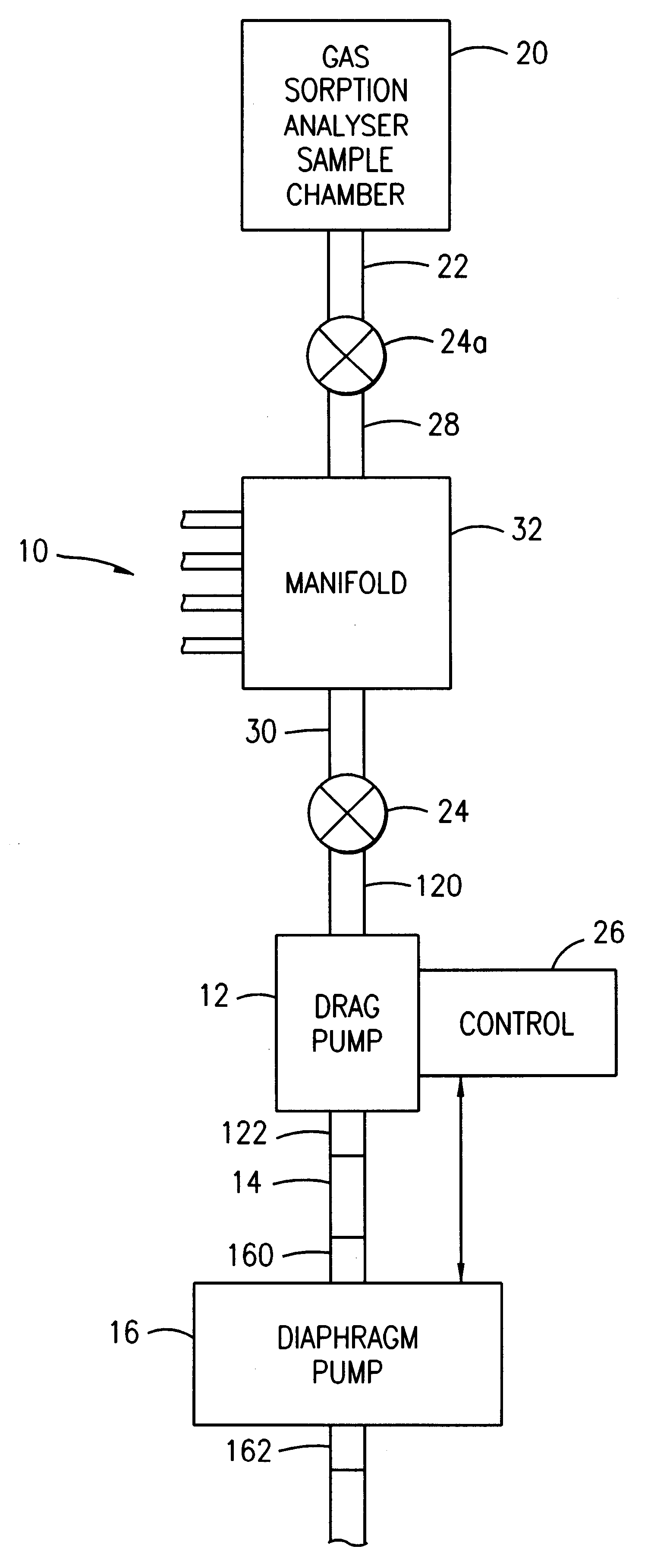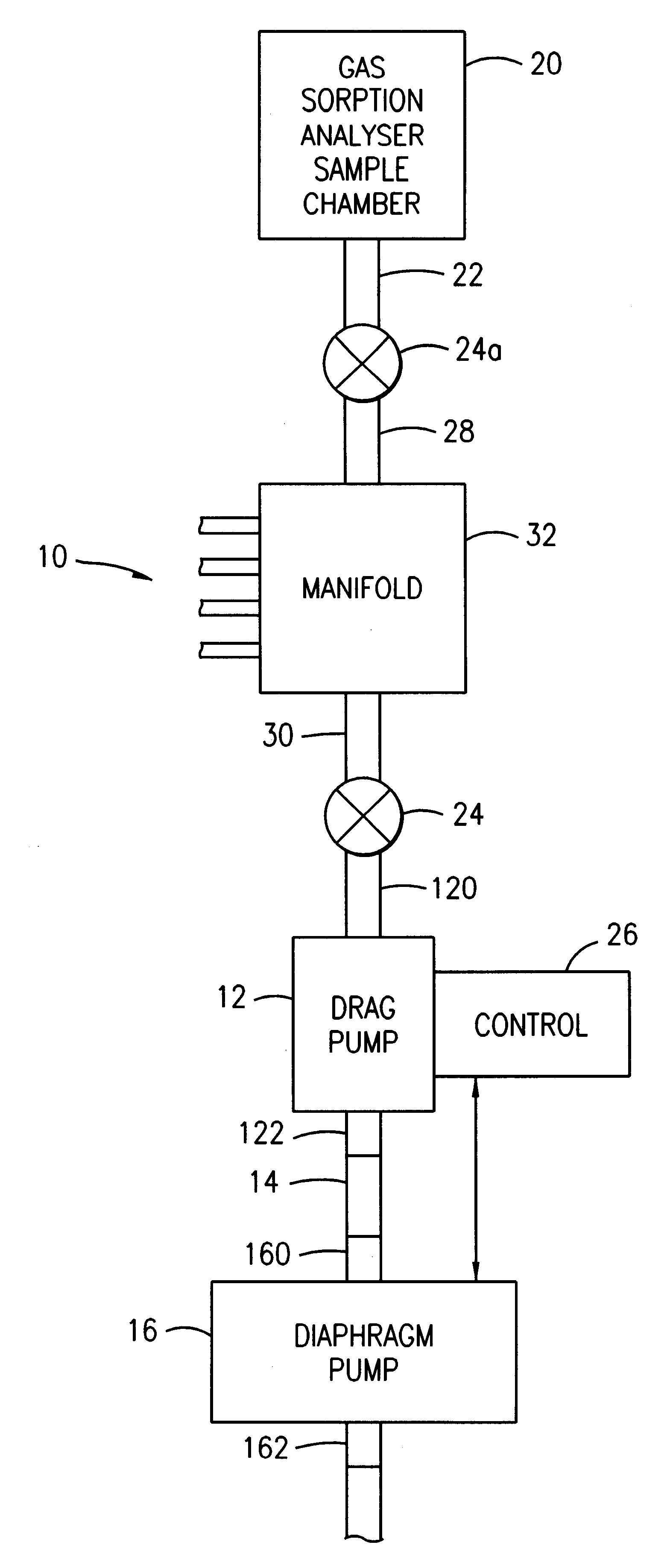Dry vacuum pump system for gas sorption analyzer
- Summary
- Abstract
- Description
- Claims
- Application Information
AI Technical Summary
Benefits of technology
Problems solved by technology
Method used
Image
Examples
Embodiment Construction
The present invention is shown in the drawing schematically as a vacuum-pumping system 10 that includes a first and second pump wherein the first pump is a turbomolecular drag pump 12 and is connected by conduit 14 to the second pump, a diaphragm pump 16.
The vacuum system 10 comprised of the turbomolecular drag pump 12 and diaphragm pump 16 are ultimately connected to valve 24 through manifold 32 and valve 24a to a gas sorption analyzer sample chamber 20 that is part of the entire gas sorption analyzer system. The overall representation is for illustrative purposes only. Any type of particulate analyzing system that requires a high vacuum in the range down to 10.sup.-5 TORR can employ the present invention. The primary benefit is that the sample, such as the gas sorption sample chamber 20 cannot be contaminated, especially by oil vapor. The analyzer sample chamber 20 is connected by conduit 22 to valve 24a.
The valve 24 is connected to manifold 32 and to the vacuum side or vacuum inl...
PUM
 Login to View More
Login to View More Abstract
Description
Claims
Application Information
 Login to View More
Login to View More - R&D
- Intellectual Property
- Life Sciences
- Materials
- Tech Scout
- Unparalleled Data Quality
- Higher Quality Content
- 60% Fewer Hallucinations
Browse by: Latest US Patents, China's latest patents, Technical Efficacy Thesaurus, Application Domain, Technology Topic, Popular Technical Reports.
© 2025 PatSnap. All rights reserved.Legal|Privacy policy|Modern Slavery Act Transparency Statement|Sitemap|About US| Contact US: help@patsnap.com


